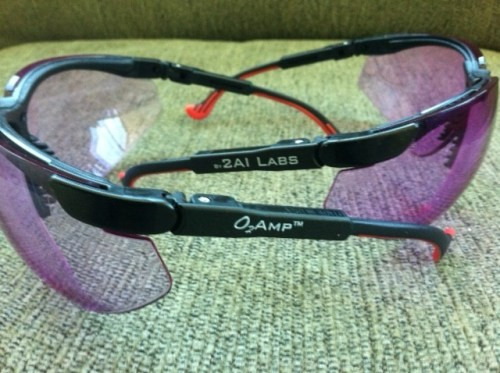New Superglasses Designed to Detect People’s Emotional and Health State

Researchers have developed an advanced eyewear that enables users to see another person's mental, emotional and health state.
Coined "O2Amp", the new superglasses have been designed by 2AI Labs and are speculated to radically change a person's everyday interactions.
The concept has been developed by lead researcher Mark Changizi during his study of colour vision in primates while at CalTech. He is the author of two books, namely, Harnessed: How Language and Music Mimicked Nature and Transformed Ape to Man and The Vision Revolution.
"One of my earlier research directions concerned the evolution and design of colour vision in primates, including us. I argued in my work and in The Vision Revolution that colour vision is for seeing the emotions, moods and health of others - the blushes, blanches, and other spectral signals we show on our skin," Forbes quoted Changizi saying.
The designing of this futuristic eyewear involves optimising the colour for sensing the spectral modulations occurring on the bare skin of other people, providing the viewer with information about the other person's state, emotion, mood and health. The spectral modulations on skin are mediated by changes in the nature of the underlying blood, in particular by modulations to the concentration and oxygenation of hemoglobin, according to the report.
Based on this colour perception research, Changizi and his team designed three versions of O2Amps, which are currently being sold to medical distributors and will hit wider markets in 2013.
In his blog, Changizi describes briefly about the three versions mentioning that they can be used in security, sports, poker, and dating.
The three versions include:
- A vein-finder, or oxygenation-isolator, that amplifies perception of oxygenation modulations under the skin (and eliminates perception of variations in the concentration of hemoglobin),
- A trauma-detector, or hemoglobin-concentration-isolator, that amplifies perception of hemoglobin concentrations under the skin (and eliminates perception of variations in oxygenation), and
- A general clinical enhancer, or oxygenation-amplifier, that combines the best features of the first two; it eliminates neither signal (i e, it retains perception of both variation in Hemoglobin oxygenation and concentration), and only amplifies perception of oxygenation.
© Copyright IBTimes 2025. All rights reserved.



















